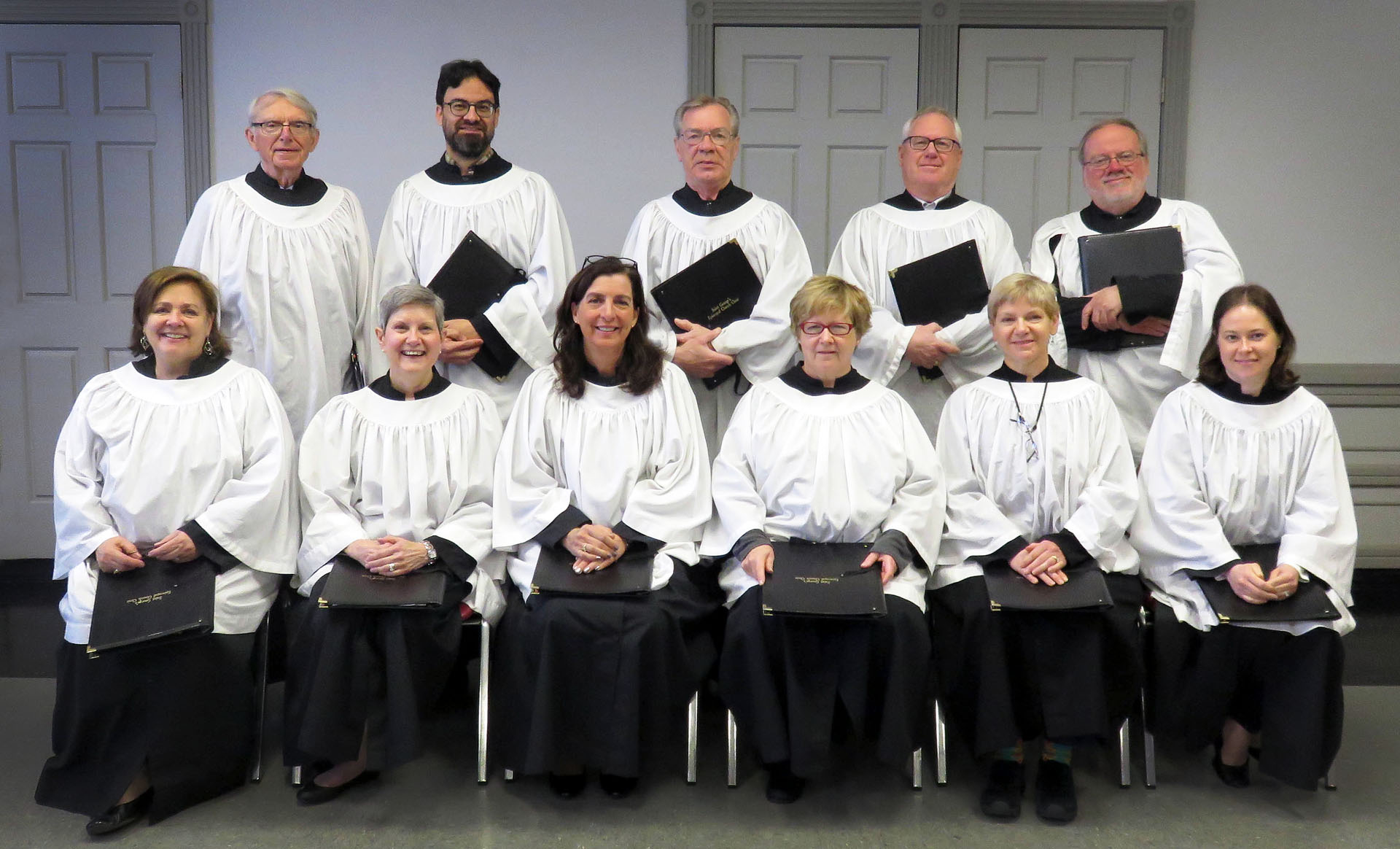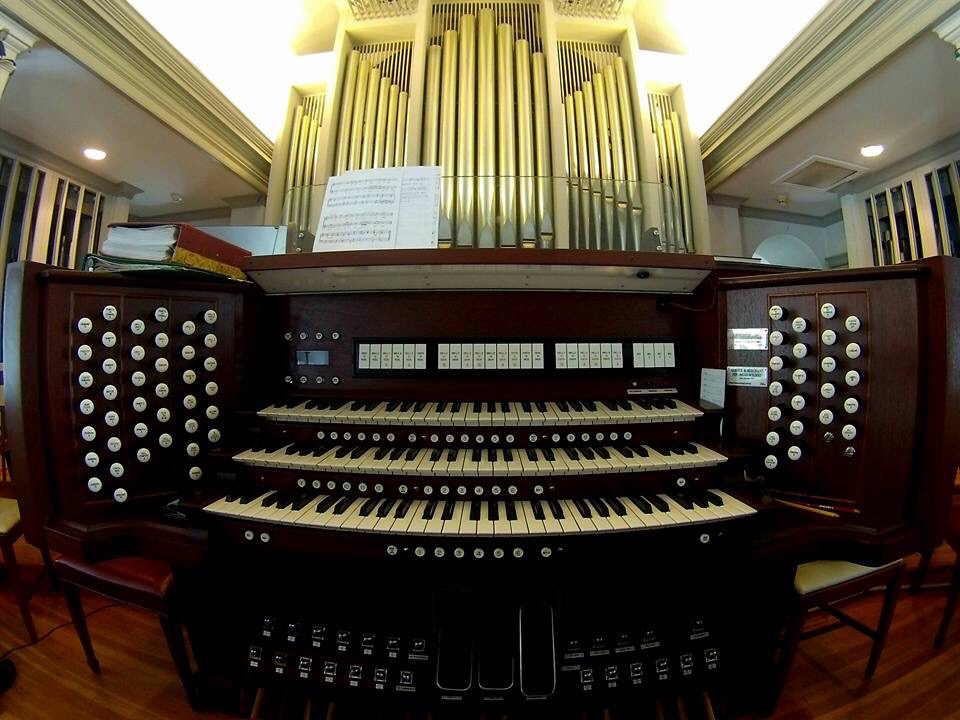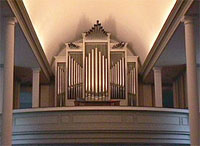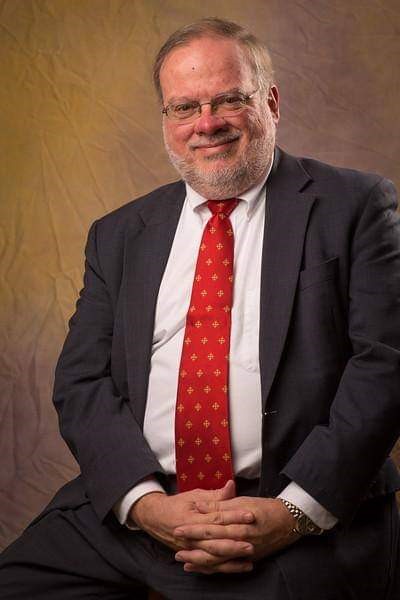Brian J Taylor, D.S.M., A.A.G.O. – Director of Music Ministry

Music Ministry at St. George’s Church
The primary purpose of music ministry at St. George’s is to enhance the Sunday celebration of the Mass with music by which God is glorified and the people edified. The sung parts of the Mass are the ordinary – that is, those parts which are repeated every Sunday – and the propers – those parts which change from week to week.
The ordinary consists of the Kyrie Eleison, the Gloria in Excelsis, the Credo or Nicene Creed (sung on major occasions, said at other times), the Sanctus & Benedictus, and the Agnus Dei. Normally these are sung by the congregation although on occasion the choir may do a choral setting of the ordinary.
The propers consist of an Introit chant, a Gradual chant or Psalm, an Alleluia (or Tract verse in Lent), an Offertory verse and a Communion verse. These are sung either by a cantor alone or a cantor and choir together. The propers reflect the themes of the day’s scripture lessons.
In addition, hymns are sung by the congregation and an anthem is offered by the choir except in the summer months.
The St. Cecilia Choir is the mixed-voice choir which sings at all Sunday and other major holy day Masses except in the summer. Members of this group volunteer their time in preparing for each Sunday Mass with a rehearsal on Tuesday evenings. Those with some music experience are encouraged to speak with the Director of Music Ministry about becoming part of this ensemble. In addition to the Sunday Masses, this choir sings Choral Evensong three times annually as well as occasional special events.
St. George’s ministry of music goes outside the walls of the parish church. The Director of Music MInistry also leads the music for Masses offered at various retirement homes as part of our Assisted Living Ministry.
At present St. George’s does not have a choral program for children or youth although there are plans to inaugurate one in the near future. Historically, St. George’s had a choir of men and boys where boys were immersed in the Anglican musical tradition and were shaped spiritually by the Anglican liturgy. Our hope is that in the future St. George’s will once again be a place where both boys and girls will have this same opportunity.
Brian J Taylor, D.S.M., A.A.G.O. – Director of Music Ministry
Jeffrey H. Wengrovius – Assistant Organist
Mrs. Joan Pearson – Assistant Organist
Dr. Brian J. Taylor has served as Organist and Director of Music Ministry for St. George’s Church since March, 2019. He has over 30 years of experience as a church musician, having served primarily Episcopal churches but also Catholic, Lutheran, Presbyterian, Methodist and Congregational churches in Virginia, South Carolina, Georgia, Tennessee, Texas, Alabama, New Jersey and Michigan before moving to Upstate New York. He holds the Doctor of Sacred Music degree from the Graduate Theological Foundation where he now serves as part-time Professor of Sacred Music via online e-tutorials. He also holds the Master of Music and Master of Sacred Music degrees from Southern Methodist University, the Master of Divinity degree from Austin Presbyterian Theological Seminary and the Bachelor of Music from Westminster Choir College. He is certified as an Associate of the American Guild of Organists. Dr. Taylor is the father of two daughters, Amelia Team Israel and Laura Team Taylor, of whom he is very proud.
The goal of the study of chant in the St. George’s choir is what we might call the contemplative study of scripture. The choir is learning to read early chant notation and sing from that notation in a way that will reinforce a feeling of stillness, both in the singers and in the congregation which listens to the music. Through this approach, the choir aims to reinforce its inner feel for the truth of scripture, as is taught by the ancient fathers and mothers of the Church. The essential goal of this study of scripture is to help the singers find a way to remove all obstacles between the inner ear of each singer and the sacred voice of scripture, speaking to the singer at deeper and deeper levels. As Gregory the Great himself put it over a thousand years ago: “If you lift your mind in contemplation, then what you first thought was spoken in the scriptures according to the ways of the earth, appears not of the earth. And it happens that as you perceive the words of sacred scripture to be of a celestial nature, so you yourself, illuminated by the grace of contemplation, are raised to the level of celestial nature.”
Gregorian chant is the traditional music of Western Christianity. The repertory includes thousands of melodies for nine services each day. It is sung in unison, without accompaniment, to Latin texts largely from the Bible. It is ancient, and its history abounds in enigmas. The music notation used by orchestras and choruses around the world today was invented (probably in the Frankish empire, somewhere around the ninth century) in order to write down the chant and preserve it. But no one knows when the music itself was composed. Another extraordinary fact: When music notation was first invented, it was not possible to read pitches, but it was possible to see whether the melody indicated went up or down. About two hundred years later, it became possible to read pitches when an Italian named Guido of Arezzo invented the musical staff (about 1025). Here is an extraordinary fact: When the melodies written down two hundred years earlier, in early notation, are compared with those whose pitches can be read, it appears that the melodies to hundreds of texts in many monasteries throughout Europe are the same! How were these melodies preserved? By memory? One can only guess.
St. Gregory the Great, whose name became identified with the chant at least as early as the eighth century, died in 604, about 200 years before the earliest music notation was invented. We do not know what music was used in services in Gregory’s day, but we do know that they were sung. Could the chant be even older than Gregory? No one can be sure.
But important as the chant is to music history, it is more important for what it is than for where it came from. Throughout its history, Gregorian chant has been associated with what we might call contemplative Christianity, Christianity based on meditation and silence. When it is well sung, the chant evokes an unmistakable sacred quality, a quality which can touch almost anyone with a reminder of something beyond the ordinary.
If we are to understand the chant, it is this sacred quality we must try to understand, and here we encounter a problem. There is little in modern aesthetic theory that can help us articulate what we feel in this ancient music. More surprisingly, we find little help in medieval treatises on music either. But if we turn to medieval writings on scripture and immerse ourselves in these works, especially those of Gregory the Great himself, we begin to realize that we are in the presence of sacred qualities reminiscent of the chant. Even though Gregory seldom mentions music, his commentaries are sister works to the chant. The chant is a musical commentary on its scriptural text as Gregory’s is a verbal one, and the aim of the two commentaries is the same. Both arts, verbal and musical, are concerned with bringing about a meeting between text and the inner person, a meeting based on stillness and prayer. The study of scripture was the foundation of monastic life, and Ato study@ meant to grow into a living relation to the text.
–Rembert Herbert
The Organ
|
M.P Moller, Opus 11589: |
|||||
|
GREAT
|
POSITIV
|
SWELL I
|
SWELL II
|
PEDAL
|
|
Built and installed in 1982, and designed by the late John Tyrell of the M.P. Moller Organ Company, formerly of Hagerstown, Md, the organ of St. George’s provides the accompaniment to congregation and choir, as well as it is also used as a recital and practice instrument. Situated in the choir loft directly above the West Doors of the Church, the Organ is housed in 3 separate chambers and features a striking silver facade crowned with a powerful Trumpet-en-chamade. The 3-manual console is built from hand-rubbed mahogany and uniquely features an unusual configuration of two separate Swell Divisions, located on either side of the loft.
In 2014, the console was completely rebuilt by the Kerner & Merchant Company of Syracuse, NY. All of the keyboards, stops, pistons, lighting, pedal tops were replaced to accommodate a new direct electric action. The combination action is operated by the Matters Control System which allows for recording and playback, a piston sequencer, 99 levels of memory and more. In addition to electrical modifications, the 8’ Principal, 8’ Spillflote, 16’ Contrabass, and 16’ Subbass were revoiced.



